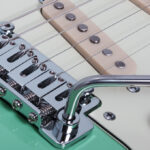For guitar players of all levels, from beginners to seasoned musicians, the quest for improved playing is constant. While often overlooked, the way you hold your guitar pick can significantly impact your tone, control, and overall playing experience. You might think after years of playing you’ve got it figured out, but even subtle adjustments to your pick grip can unlock new levels of musicality. This guide will explore various methods of how to hold a guitar pick, helping you discover what works best for your style and preferences.
Exploring Different Guitar Pick Grips
There isn’t one single “correct” way to hold a guitar pick. Many accomplished players have developed unique techniques over time. However, understanding the fundamental approaches can provide a solid foundation for developing your own optimal grip. Let’s delve into three primary methods, each offering distinct advantages and nuances.
1. The “O” Method: A Balanced Approach
Often considered the most versatile and widely recommended method, the “O” method emphasizes a balance between control and tonal expression. This grip involves forming an elongated “O” shape with your thumb and index finger.
 Close-up of the "O" method guitar pick hold, showing the thumb and index finger forming an elongated O shape around the pick.
Close-up of the "O" method guitar pick hold, showing the thumb and index finger forming an elongated O shape around the pick.
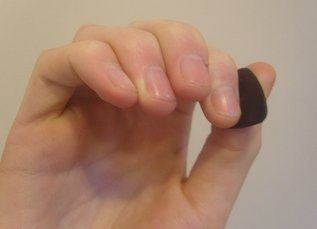 Another angle of the "O" method guitar pick hold, highlighting the relaxed curvature of the index finger and thumb.
Another angle of the "O" method guitar pick hold, highlighting the relaxed curvature of the index finger and thumb.
How it works: The pick is held between the side of your thumb and the side of your index finger. Your index finger is gently curved, creating a comfortable and secure hold.
Benefits:
- Versatility: Well-suited for both rhythm and lead playing, offering a good compromise between control and flexibility.
- Tone Control: Allows for nuanced control over the pick’s angle and depth of attack, influencing your guitar’s tone.
- Popular Choice: Many players find this method intuitive and adaptable to various musical styles.
Best for: Players seeking a balanced approach applicable to diverse genres and techniques.
2. The “Pinch” Method: Enhanced Flexibility
The “pinch” method prioritizes flexibility, making it particularly useful for techniques like strumming and lighter playing styles. This grip utilizes the flat of your index finger instead of the side.
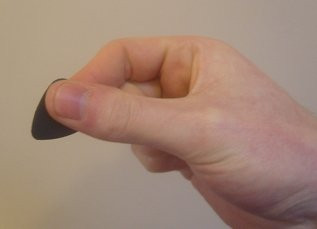 Demonstration of the "pinch" method guitar pick hold, showing the pick held between the thumb and the flat of the index finger.
Demonstration of the "pinch" method guitar pick hold, showing the pick held between the thumb and the flat of the index finger.
 Alternative view of the "pinch" guitar pick grip, emphasizing the flatter index finger position and relaxed thumb.
Alternative view of the "pinch" guitar pick grip, emphasizing the flatter index finger position and relaxed thumb.
How it works: The pick is pinched between your thumb and the flat surface of your index finger. This looser grip allows for more pick flexibility.
Benefits:
- Flexibility: Ideal for strumming and rhythmic playing where a looser, more flexible pick attack is desired.
- Light Gauge Picks: Pairs well with lighter gauge picks, enhancing their natural flexibility.
- Smooth Strumming: Facilitates smooth and fluid strumming patterns, particularly for rhythm guitar parts.
Best for: Strumming-focused players or those using light gauge picks who value flexibility.
3. The “Fist” Method: Power and Attack
The “fist” method, sometimes favored by bluegrass and heavier style players, emphasizes power and a stronger attack. This grip often utilizes heavier gauge picks to maximize tonal impact.
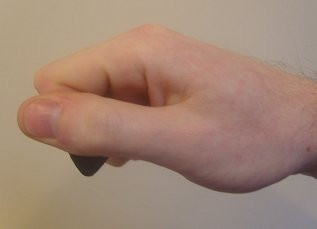 Illustration of the "fist" method pick hold, showcasing a more closed fist-like grip with the index finger curled.
Illustration of the "fist" method pick hold, showcasing a more closed fist-like grip with the index finger curled.
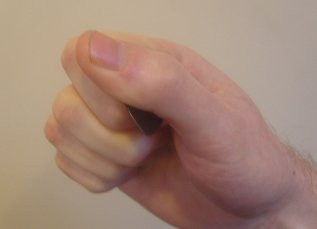 Another perspective of the "fist" guitar pick grip, highlighting the firmer hold and the pick extending less from the fingers.
Another perspective of the "fist" guitar pick grip, highlighting the firmer hold and the pick extending less from the fingers.
How it works: The index finger is curled more significantly, almost parallel to the thumb, creating a firmer, “fist-like” grip.
Benefits:
- Stronger Tone: Can produce a louder, more powerful tone, especially when using heavier gauge picks.
- Heavy Gauge Picks: Complements heavier picks, allowing for greater control and articulation with thicker materials.
- Aggressive Styles: Suitable for musical styles that demand a strong, assertive pick attack.
Best for: Players using heavier picks or seeking a powerful, aggressive tone, often in genres like bluegrass or rock.
Finding Your Ideal Grip: Experimentation is Key
Ultimately, the “best” way to hold a guitar pick is subjective and depends on your individual playing style, musical preferences, and the type of guitar you play. Experimentation is crucial in discovering what feels most natural and yields the desired results for you.
Tips for Experimenting:
- Vary Pick Gauges: Try different pick thicknesses in combination with each holding method. You’ll notice how different gauges interact with each grip, affecting tone and control.
- Musical Styles: Play through different musical styles you enjoy, consciously switching between pick grips to see how each method performs in various contexts.
- Focus on Comfort and Control: Pay attention to how comfortable each grip feels over extended playing sessions and how much control you have over your picking technique.
- Don’t Be Afraid to Adjust: Even within these three main methods, subtle variations exist. Experiment with slight adjustments to finger curvature and pick angle to fine-tune your grip.
The Importance of Consistency
While experimentation is encouraged, once you find a grip that feels comfortable and effective, consistency is key. Developing muscle memory around a particular pick hold is essential for long-term progress. Constantly switching grips can hinder your development and make it harder to internalize your technique.
Stick with What Works:
- Avoid Constant Changes: Resist the urge to frequently change your pick grip, especially after the beginner stage.
- Muscle Memory: Allow your muscles to adapt and develop memory around your chosen grip. This will lead to more fluid and natural playing over time.
- Focus on Musicality: Instead of obsessing over the “perfect” grip, focus on making music. Your chosen grip should serve as a tool to express your musical ideas.
Conclusion: Your Pick Grip, Your Sound
Learning how to hold a guitar pick effectively is a fundamental aspect of guitar playing. By understanding the different methods and engaging in mindful experimentation, you can discover a grip that optimizes your tone, control, and overall playing experience. Remember, there’s no single right answer – the best approach is the one that feels most natural and empowers you to create the music you love. So, explore these techniques, trust your instincts, and let your pick grip become a natural extension of your musical voice.


